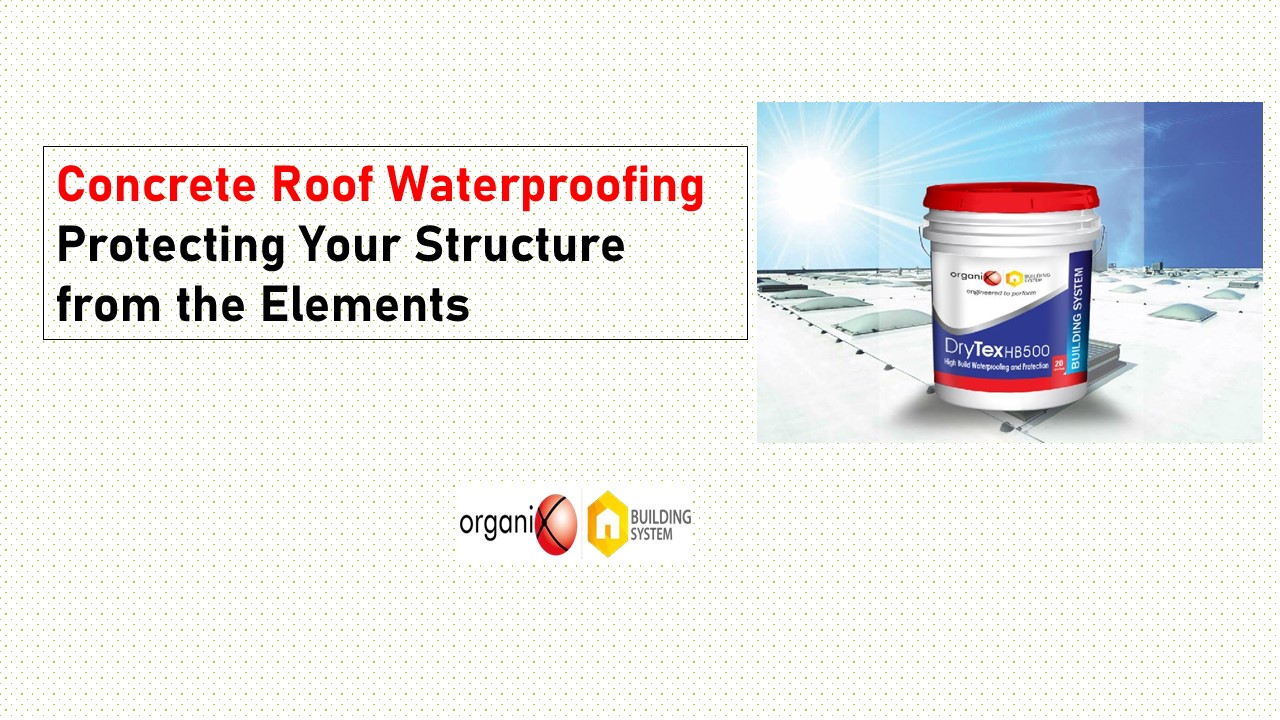Concrete Roof Waterproofing: Protecting Your Structure from the Elements - PowerPoint PPT Presentation
Title:
Concrete Roof Waterproofing: Protecting Your Structure from the Elements
Description:
Concrete roof waterproofing is essential for preserving the structural integrity of your building and ensuring a safe and comfortable environment. By implementing appropriate waterproofing measures, such as surface coatings, membrane systems, integral waterproofing, or water repellents, you can effectively prevent water infiltration and the associated damages. – PowerPoint PPT presentation
Number of Views:2
Title: Concrete Roof Waterproofing: Protecting Your Structure from the Elements
1
Concrete Roof Waterproofing Protecting Your
Structure from the Elements
2
Introduction-
A concrete roof is a durable and commonly used
roofing option for both residential and
commercial buildings. Its robustness and
longevity make it an ideal choice for various
structures. However, concrete roofs are not
impervious to water damage. Without proper
waterproofing measures, moisture infiltration can
lead to structural issues, mold growth, and
costly repairs. In this blog post, we will
explore the importance of concrete roof
waterproofing and the various methods used to
protect your structure from the elements.
3
The Importance of Concrete Roof Waterproofing
Water is one of the most significant threats to
the integrity of any structure, including
concrete roofs. Over time, exposure to rain,
snow, and moisture can cause concrete to crack,
weaken, and eventually fail. Waterproofing your
concrete roof is crucial to prevent water
penetration and its damaging consequences.
4
- Preventing Structural Damage Water infiltration
through cracks and pores in the concrete can lead
to the corrosion of steel reinforcements within
the roof structure. This can compromise the
strength of the roof, potentially causing
collapses or significant damage during extreme
weather conditions. - Mold and Mildew Prevention Excessive moisture in
the roof can create an ideal environment for mold
and mildew growth. These microorganisms not only
cause unpleasant odors and discoloration but also
pose health risks to occupants. Waterproofing
safeguards against mold infestations, ensuring a
healthier indoor environment. - Energy Efficiency A properly waterproofed
concrete roof can enhance energy efficiency. By
preventing water leakage, insulation materials
stay dry and maintain their thermal performance.
This helps regulate indoor temperatures, reducing
the need for excessive heating or cooling and
lowering energy consumption.
5
Methods of Concrete Roof Waterproofing
- Surface Coating Surface coatings are one of the
most common methods used for concrete roof
waterproofing. These coatings, such as acrylics,
polyurethanes, or elastomeric coatings, create a
protective barrier that prevents water from
seeping into the concrete. Surface coatings are
easy to apply and can provide excellent
resistance to UV rays, temperature fluctuations,
and weathering. - Membrane Waterproofing Membrane systems involve
the application of a waterproofing membrane over
the concrete roof surface. This membrane can be
made of materials like bitumen, thermoplastic, or
synthetic rubber. Membrane waterproofing offers
superior durability and flexibility, making it
suitable for areas with significant temperature
variations or structural movement.
6
- Integral Waterproofing Integral waterproofing
involves adding waterproofing compounds directly
into the concrete mixture during the construction
phase. These compounds chemically react with the
concrete to create a waterproof matrix throughout
the structure. Integral waterproofing is a
long-lasting solution, as it provides protection
even if cracks occur in the concrete. - Water Repellents Water repellents are applied to
the concrete surface to reduce water absorption.
They work by forming a thin hydrophobic layer
that causes water to bead up and roll off the
surface. Water repellents are particularly useful
for protecting older concrete roofs or as a
supplementary measure alongside other
waterproofing methods.
7
Conclusion-
Concrete roof waterproofing is essential for
preserving the structural integrity of your
building and ensuring a safe and comfortable
environment. By implementing appropriate
waterproofing measures, such as surface coatings,
membrane systems, integral waterproofing, or
water repellents, you can effectively prevent
water infiltration and the associated damages.
Remember to consult with professionals
experienced in roof waterproofing to determine
the most suitable method for your specific needs.
Investing in concrete roof waterproofing today
will save you from costly repairs and provide
peace of mind for years to come.
8
Address Organix Building System LLC
Saheel 1, Near Al Ahili StadiumDubai, United
Arab Emirates
Email Id info_at_organixbs.com Contact No
97145785568
FIND US































